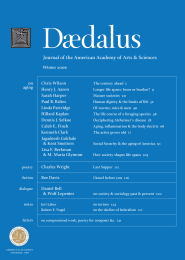The life course of a skill-intensive foraging species
The study of model organisms, such as flies and worms, is becoming an increasingly important tool in aging research. They are ideal for experiments that manipulate rates of aging because they are small, do not live long, reproduce rapidly, and have relatively uncomplicated genomes. To the extent that many of the basic processes governing aging are similar across a wide range of organisms, we can learn much about human aging through the study of simpler creatures.
But in other ways, human beings themselves are also model organisms. We live and have lived in a diverse array of environments; we can know our ages without observing our own births; we leave historical, archaeological, and paleontological records; and we can report on the phenomena that are relevant to the aging process. We certainly know much more about aging in humans than we do about aging in any other mammal, with the possible exception of laboratory rats and mice.
In fact, the study of human aging and its evolution is especially promising today. It is revealing clues not only to our evolutionary history, but also to the forces shaping life span evolution among living creatures in general.
More specifically, research with the few remaining people that still practice a traditional hunting and gathering lifestyle is providing critical information about the life histories of our ancestors and the selection pressures that acted on them. Humans lived as hunter-gatherers for the vast majority of their evolutionary history (the genus Homo has existed for about 2 million years). Modern hunter-gatherers, who are affected by global socioeconomic forces, are not living replicas of our stone age past. Yet, in spite of their variable historical, ecological, and political conditions, foraging peoples exhibit remarkable similarities, especially in the realms of development and aging, suggesting that in our species natural selection has produced a characteristic life history. This life history is quite distinct from that of our closest living primate relatives.
. . .
